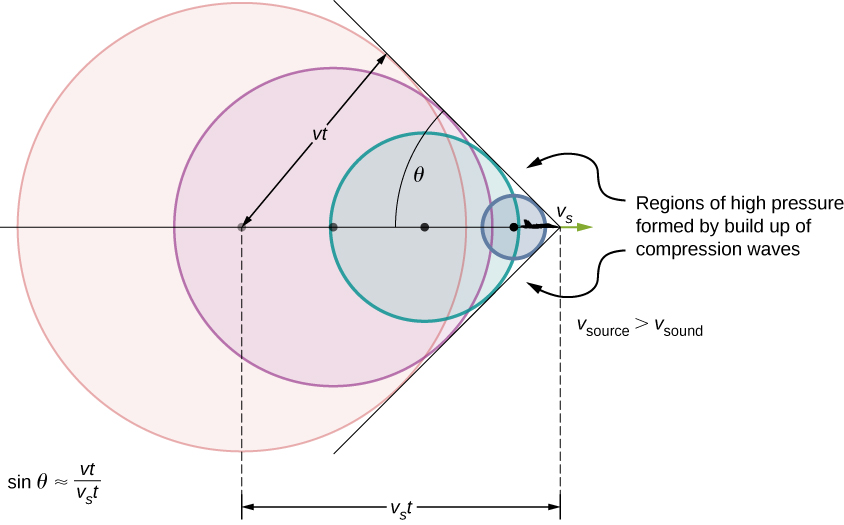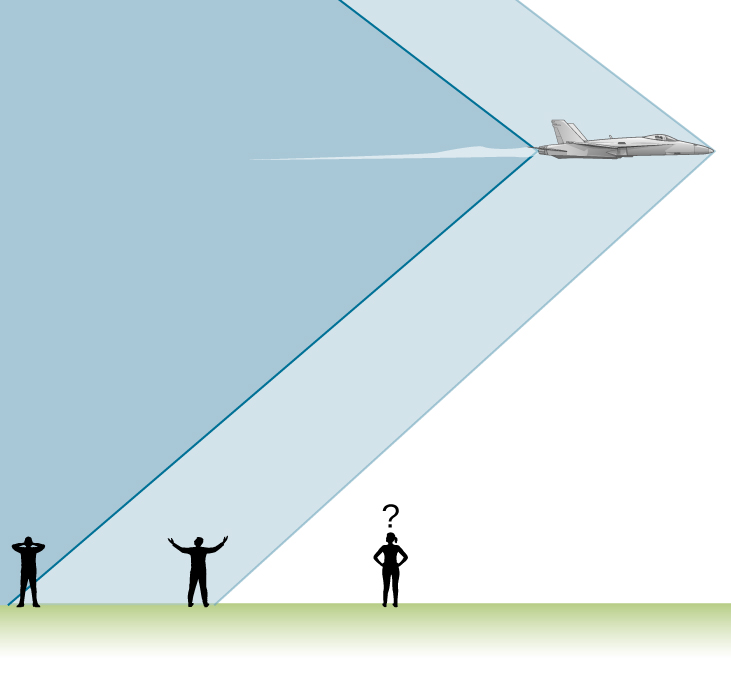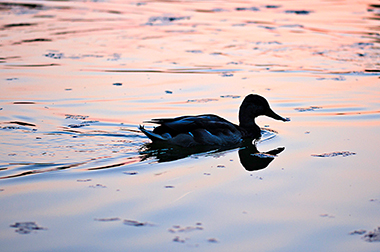| << Chapter < Page | Chapter >> Page > |

Constructive interference along the lines shown (a cone in three dimensions) from similar sound waves arriving there simultaneously. This superposition forms a disturbance called a shock wave , a constructive interference of sound created by an object moving faster than sound. Inside the cone, the interference is mostly destructive, so the sound intensity there is much less than on the shock wave. The angle of the shock wave can be found from the geometry. In time t the source has moved and the sound wave has moved a distance vt and the angle can be found using Note that the Mach number is defined as so the sine of the angle equals the inverse of the Mach number,
You may have heard of the common term ‘ sonic boom .’ A common misconception is that the sonic boom occurs as the plane breaks the sound barrier; that is, accelerates to a speed higher than the speed of sound. Actually, the sonic boom occurs as the shock wave sweeps along the ground.
An aircraft creates two shock waves, one from its nose and one from its tail ( [link] ). During television coverage of space shuttle landings, two distinct booms could often be heard. These were separated by exactly the time it would take the shuttle to pass by a point. Observers on the ground often do not see the aircraft creating the sonic boom, because it has passed by before the shock wave reaches them, as seen in the figure. If the aircraft flies close by at low altitude, pressures in the sonic boom can be destructive and break windows as well as rattle nerves. Because of how destructive sonic booms can be, supersonic flights are banned over populated areas.

Shock waves are one example of a broader phenomenon called bow wakes. A bow wake , such as the one in [link] , is created when the wave source moves faster than the wave propagation speed. Water waves spread out in circles from the point where created, and the bow wake is the familiar V-shaped wake, trailing the source. A more exotic bow wake is created when a subatomic particle travels through a medium faster than the speed of light travels in that medium. (In a vacuum, the maximum speed of light is in the medium of water, the speed of light is closer to 0.75 c .) If the particle creates light in its passage, that light spreads on a cone with an angle indicative of the speed of the particle, as illustrated in [link] . Such a bow wake is called Cerenkov radiation and is commonly observed in particle physics.


Notification Switch
Would you like to follow the 'University physics volume 1' conversation and receive update notifications?